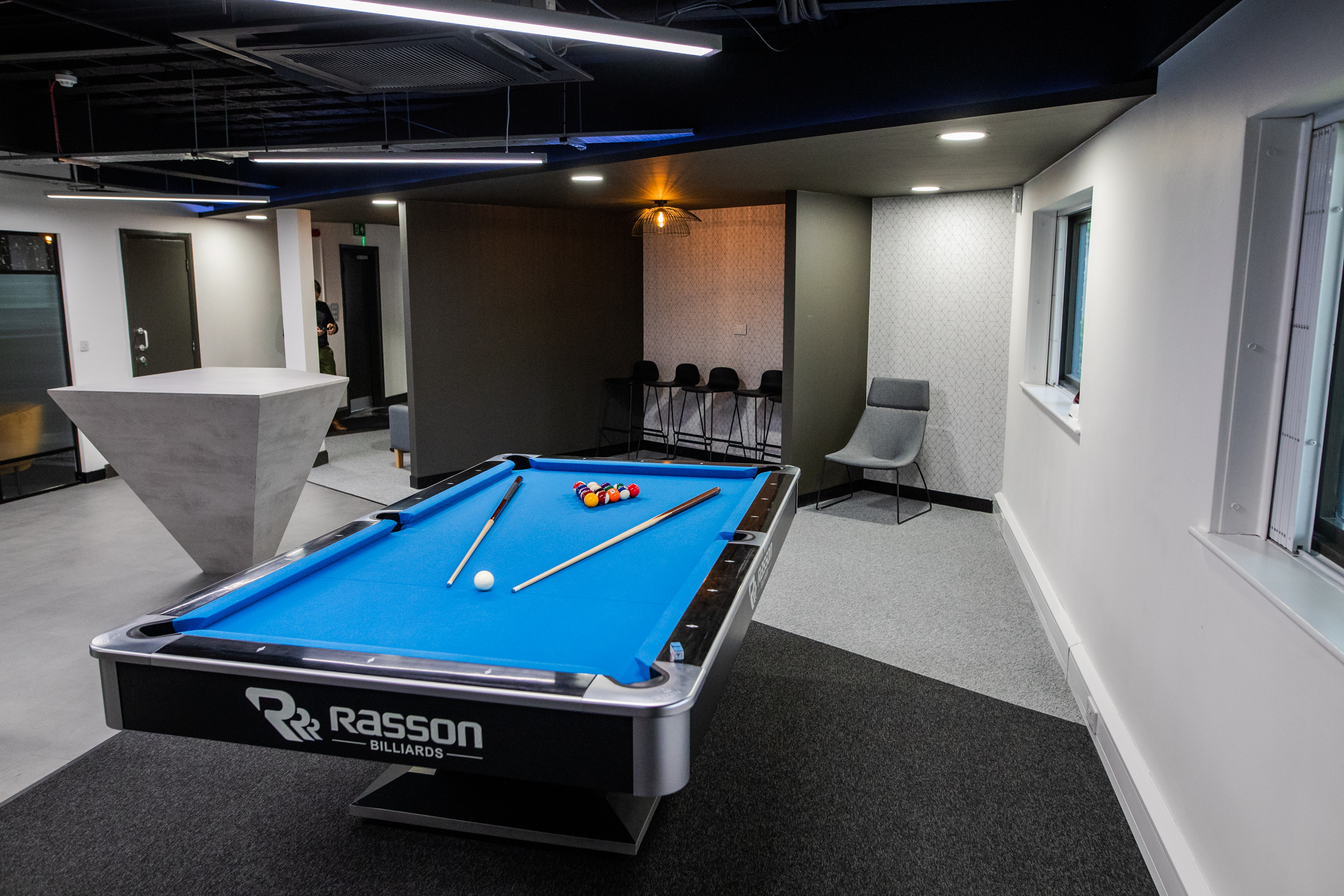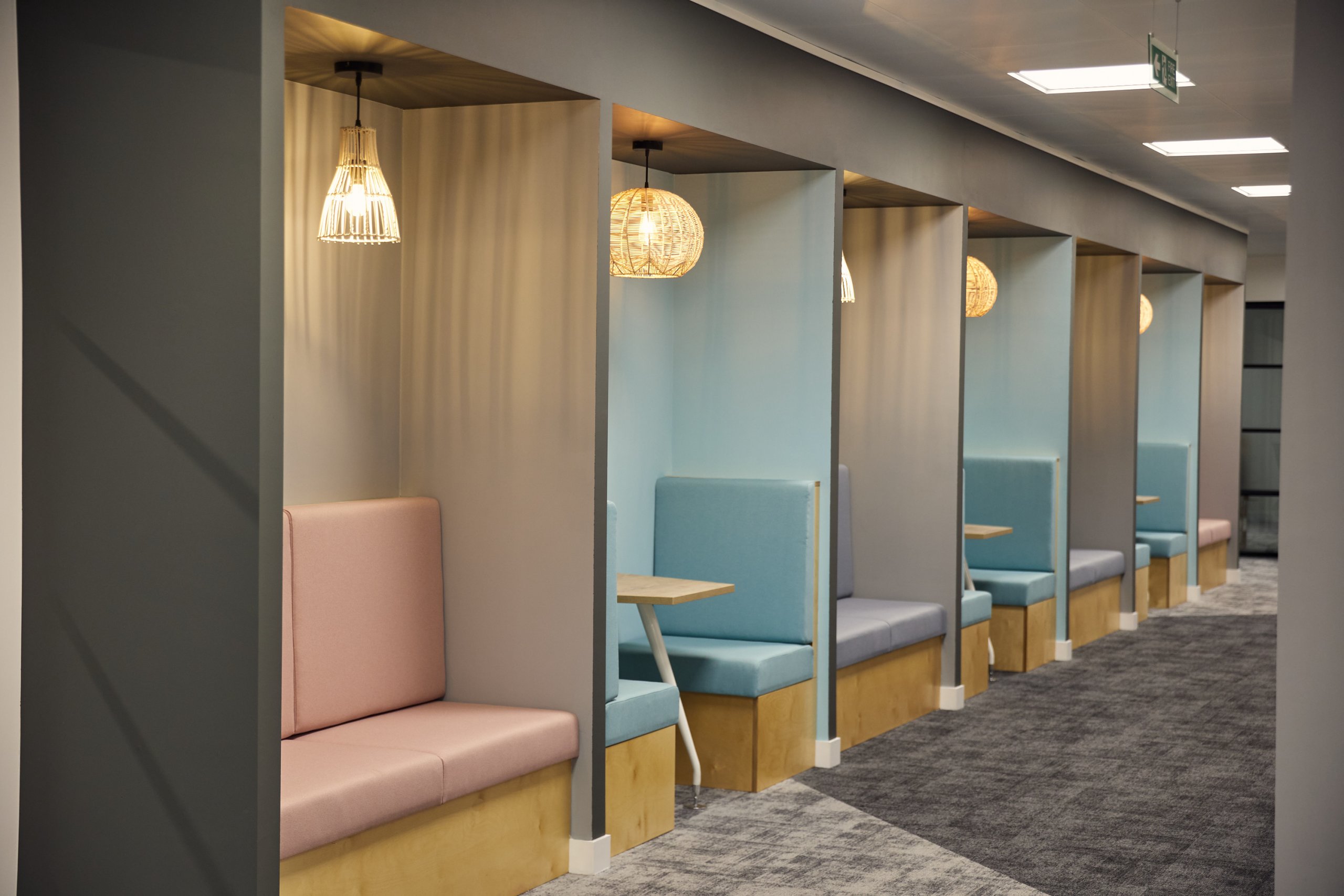Stress has skyrocketed through lockdown. Where some environments are unavoidably stressful, for example working on NHS COVID wards, our office environments no longer have to be. With foresight and planning (as well as putting into practice all COVID-safe working guidelines), we can try to minimise stress in the workplace. No one needs work to be the critical stress factor in what is already a hugely stressful time.
We thought it would be useful to gather eleven top tips on reducing stress in your office or workplace. Where some changes can be small and aesthetic (providing lots of greenery inside, for example), bigger changes (like being an emotionally supportive workplace) can take longer to establish – but are likely to be even more crucial. Read on for our tips, large and small, on helping your workplace be as stress-free as possible.

Stressors can be different for different employees – and indeed, some employees’ relaxation methods might be aggravating for others, whether that’s listening to music or using zoned lighting! Not all stressors are as ambiguous, though. Many common workplace stressors are based around high workloads, uncooperative colleagues and a lack of resources.
Stress in itself need not have a detrimental effect on employees. Stress is merely a response to difficult situations – what in evolutionary terms would’ve been natural hazards, provoking our ‘fight or flight’ reflexes. We can begin to safeguard employees’ mental health from the negative impacts of stress by making
sure that they have all the tools they need to do their jobs, and by making sure that communication lines between themselves, colleagues and bosses are always open. Good relationships are crucial to help identify – and ameliorate – stressful situations.
Self-care is super-important for positive wellbeing in the workplace. If you can bring physical, emotional, social and spiritual support to your staff, you’ll be helping them to proactively create balance in their lives. Supporting this kind of self-care means encouraging eating well, getting enough sleep and respite, encouraging exercise and encouraging socialising too. Self-medicating or escapist behaviours, such as using alcohol or drugs, should be avoided, as they don’t have positive self-care outcomes. Consider what workplace initiatives you could instate to encourage these – whether it’s turning off all work devices as a rule from 7pm, providing free or subsidised exercise or helping to support balanced diets by providing healthy snacks.
Carrying on from looking after your staff, supporting workplace wellness positively entails utilising some of the best weapons to hand to fight stress – diet and exercise. Exercise releases powerful endorphins and burns up excess cortisol that work might be generating, so providing lunchtime yoga once a week or month, joining the government-approved cycle to work scheme, or subsiding staff gym memberships, could be a brilliant way to reduce workplace stress and keep all employees happy and healthy. Tackling this from another angle, consider providing healthy snacks in the office, to establish good food habits. That could be as simple as choosing to stock the fridges with healthy snacks as a Friday treat instead of taking everyone out for lunch – and providing a well-stocked fruit bowl instead of biscuits.
That ‘stiff upper lip’ stuff about keeping family/life and work separate has died a death over the last couple of years. Long gone are the days of embarrassment when a young child breaks into the zoom call – it happens on the daily. Office environments should respond to this too, taking account of the idea that a person is an entity made up of a delicate work / life balance.
The most conducive environments for positive staff mental health and less stress in the office are ones in which staff can express vulnerability, and not have to bluster and put on a facade of coping at all times. This can be as easy as providing an ear to a colleague or staff member who seems subdued. A simple “are you doing ok?”, or the recognition inherent in “Don’t worry, I’ve been there, it gets better” when you know someone’s having a particularly stressful day can signal that you’re emotionally available if they need someone to turn to – that they aren’t alone, and there is a team behind them in support.
Employee assistance plans can include counselling services, wellbeing classes, disability leave and types of therapy to support staff who are suffering from stress or other, broader, debilitating conditions. These tend to harbour stigma, however, so it’s really important to illustrate that staff voicing their need to take advantage of such workplace support is responded to positively. The lighter end of the spectrum can see staff supported long before their situation gets serious – and for those who need more foundational support, the likelihood of coming back into a supportive workplace is so much higher than trying to surmount the barrier of returning to a workplace where you felt alone, isolated and vulnerable.

Here at Business Interiors, this is kind of our area of expertise. Productivity soars when employees are happy at work, and feeling happy in our environment is a massive part of that! Natural light is a big, known factor in positive mental wellbeing at work, as is the provision of greenery (otherwise known as biophilic design). Small changes can make dramatic differences. If you think we might be able to help reinvigorate your workspace, get in touch!
If the pandemic has taught us anything, it’s that flexible working is really great for a work/life balance, and for creating trust between the company and the employee. But did you know it can also save you, as the employer, money? If you grow, for example, you don’t need to immediately expand your work area when your areas are made for flexible working. If you grow from ten to 20 employees with a bank desk system, you need ten more desks – it can’t be helped. That might even mean moving the company to a new building. With agile working however, add ten more employees but create space for informal work environments (in the kitchen or on comfy sofas, for example), quiet spaces, meeting rooms, and the flexibility to work from home, and suddenly those deserted areas, like the client ‘meet and greet’ areas, are utilised. The kitchen is used. The meeting rooms are used. It’s all about providing spaces to fit the employees’ activities – and this boosts productivity, and minimises stress. Want to learn more? Download our white paper on agile working to get the full lowdown.
Not everyone thrives on the hubbub. Some roles, and some jobs in every day-to-day routine, require quiet and calm – so it’s worth making that sort of quiet space available to all. And to destress, quiet and calm environments can be crucial. Whether that’s a quiet lounge space in a lesser-used hallway, a meeting room, or even a silent booth, it’s not hard to fit “quiet zones” into even the smallest work spaces, and their power for destressing can’t be underestimated.
For some, it’s the last thing they want to do on a Friday night. But you’ll probably find that many employees thrive on the opportunity to become better acquainted with their colleagues on a social level – and for some, it’ll be a real lifeline, minimising stress and allowing them to connect. A simple afterwork social sesh on a Friday, or an extended Friday lunchtime, could be all it takes.
Some worry that providing counselling encourages employees to problematize smaller problems – but the reverse is true. Helping employees to deal with problems, from smaller stressors to larger traumatic events, has a massive impact on their mental health in general, and makes workplace stresses so much more manageable. Having an open and caring environment towards mental health can be the difference between supporting an employee through a hard time and alienating them irreparably.
Easier said than done at huge organisations, but if every staff member feels that they have some degree of a personal relationship with the boss or management, structures can be subverted when they aren’t working, and that can feel very comforting. When an intern struggles with their direct supervisor, for example, it can feel to them that the whole organisation is against them – when in fact it could be the simple matter of a clash in personalities. Making higher up members of the company available at social events can encourage this, but it’s also important to maintain professionalism and boundaries if you want to retain some sense of organisational structure. Balancing care with professionalism is a delicate but crucial dance.
From rethinking office aesthetics to redesigning how your office ‘feels’ and operates, reducing stress in the workplace doesn’t have to be expensive – but it does have to be thought through, and systemic. If we can help you reconsider the aesthetics of your office, and make them work better for you and your employees, get in touch with our team today.